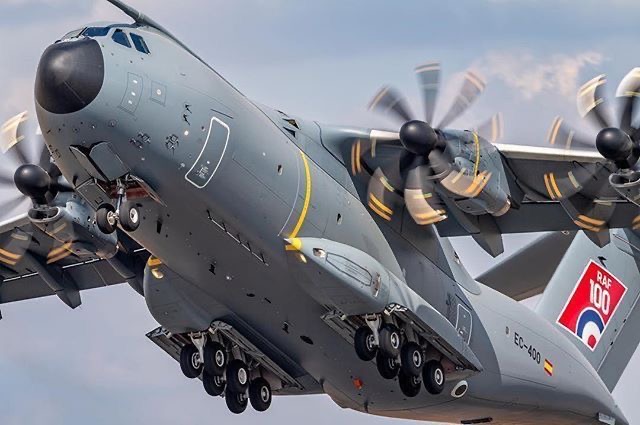
The Airbus A-400M Atlas is one of the most advanced military transport aircraft in the world, designed to meet the demanding needs of modern air forces. For the Royal Air Force (RAF), the A-400M has become a crucial part of its air mobility fleet, bridging the gap between the smaller C-130 Hercules and the larger Boeing C-17 Globemaster III. With its blend of payload capacity, range, and versatility, the A-400M represents a significant leap forward in the RAF’s ability to conduct global missions.
The A-400M was developed by Airbus as a next-generation transport aircraft capable of both strategic and tactical operations. It can fly long distances like a strategic airlifter, yet also operate from short and unprepared runways like a tactical aircraft. This dual capability is vital for the RAF, which often needs to support overseas operations, humanitarian missions, and rapid deployments into austere environments. The aircraft first entered RAF service in 2014 and has steadily increased in importance as the aging C-130 fleet is phased out.
One of the A-400M’s greatest strengths is its payload capacity. It can carry up to 37 tons of cargo, which allows it to transport heavy vehicles, helicopters, and large numbers of troops. This makes it ideal for missions ranging from resupplying forces in combat zones to delivering aid during natural disasters. The aircraft is also designed with a wide cargo hold, enabling it to carry equipment that would not fit inside smaller transport aircraft. In this sense, it fills a critical capability gap between the Hercules and the much larger C-17.

Performance-wise, the A-400M is powered by four Europrop TP400-D6 turboprop engines, which make it one of the most powerful turboprop aircraft ever built. These engines give it the ability to fly at high subsonic speeds while maintaining excellent fuel efficiency. The Atlas can travel over 2,000 nautical miles with a full payload, enabling the RAF to deploy equipment and personnel across continents without the need for frequent refueling stops. Its ability to operate at low altitudes and land on rough airstrips further enhances its tactical flexibility.
Beyond cargo transport, the A-400M also has specialized roles. It can perform air-to-air refueling missions, acting as a tanker for fast jets and helicopters. It can also be configured for medical evacuation, with the ability to carry dozens of stretchers and provide life-saving care while in flight. This adaptability ensures that the RAF can use the aircraft in multiple scenarios, from combat operations to disaster relief.
For the RAF, the A-400M has already proven its worth in real-world missions. It has been used to support British troops overseas, deliver aid to disaster zones, and transport vital supplies during emergencies such as the COVID-19 pandemic. Its ability to carry outsized cargo has also been particularly valuable in operations where time and capacity are critical.
In conclusion, the Airbus A-400M Atlas has become a cornerstone of the RAF’s modern airlift capability. Combining the qualities of both tactical and strategic transport aircraft, it offers unmatched flexibility and performance. As the RAF continues to evolve to meet global challenges, the A-400M will remain a vital asset, ensuring that the United Kingdom can project power, deliver humanitarian aid, and support operations around the world.




